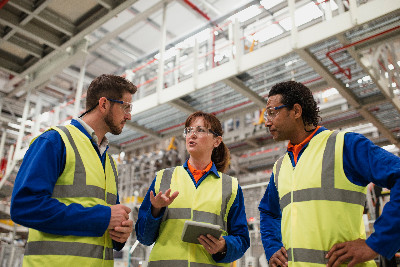As the world around us continues to change rapidly every day, OSH must evolve with it. A report from the International Labor Organization (ILO) takes a look back at a century of workplace safety and where it is moving in the future. Since 1919, the ILO has worked to improve working conditions for people around the globe.
OSH must evolve with it. A report from the International Labor Organization (ILO) takes a look back at a century of workplace safety and where it is moving in the future. Since 1919, the ILO has worked to improve working conditions for people around the globe.
The report, Safety and Health at the Heart of the Future of Work: Building on 100 Years of Experience, examines four key factors driving change in the workplace and the challenges and opportunities each presents to workplace safety.
-
Technology
The role of technology in the workplace can be a double-edged sword. Utilized effectively, robotics and other technological advances can reduce hazards and improve training. Handled improperly, however, these tools can introduce new hazards and impact the psychosocial health of workers.
-
Demographic shifts
As workplace demographics around the globe change, organizations must adapt accordingly. While more diverse and inclusive workplaces present many opportunities, there are challenges as well.Young workers coming into the workforce have high workplace injury rates and may not be as familiar with occupational hazards, while older workers face physical challenges as they age that may hinder their ability to work safely. In addition, women face unique challenges given that they are more likely to have nonstandard work arrangements and are more prone to musculoskeletal disorders.
-
Sustainable development
Workplaces have a tremendous impact on the natural environment and the people who work in it. Now and into the future, organizations will be challenged to address how they address air pollution, climate change and other factors to improve the health of the physical environment, as well as that of their workers. Industries such as renewable energy production, sustainable agriculture and green architecture present an opportunity to improve both environmental quality and workplace safety.
-
Work organization
The organization of work has and continues to be a complex balancing act. While nonstandard forms of employment and nontraditional working time arrangements provide employers flexibility in meeting business demands, they are not without their drawbacks. This kind of work organization can have detrimental effects on employee well-being, both in terms of creating income insecurity due to the temporary nature of certain types of work, as well as negative effects on a person’s productivity and psychosocial health due to working excessive hours. The report states that “limits on excessive work hours will reduce occupational accidents and associated psychosocial risks.”
Faced with these challenges and opportunities, the report offers six areas of focus for addressing these issues into the future.
- Anticipate new and emerging OSH risks
- Employ a multidisciplinary OSH approach
- Establish a link between OSH and public health
- Educate the public on OSH issues
- Expand partnerships with government agencies
- Strengthen international standards and other OSH tools
Further information on the report can be found on the ILO website.